See the Orion Nebula Tonight with These Tips
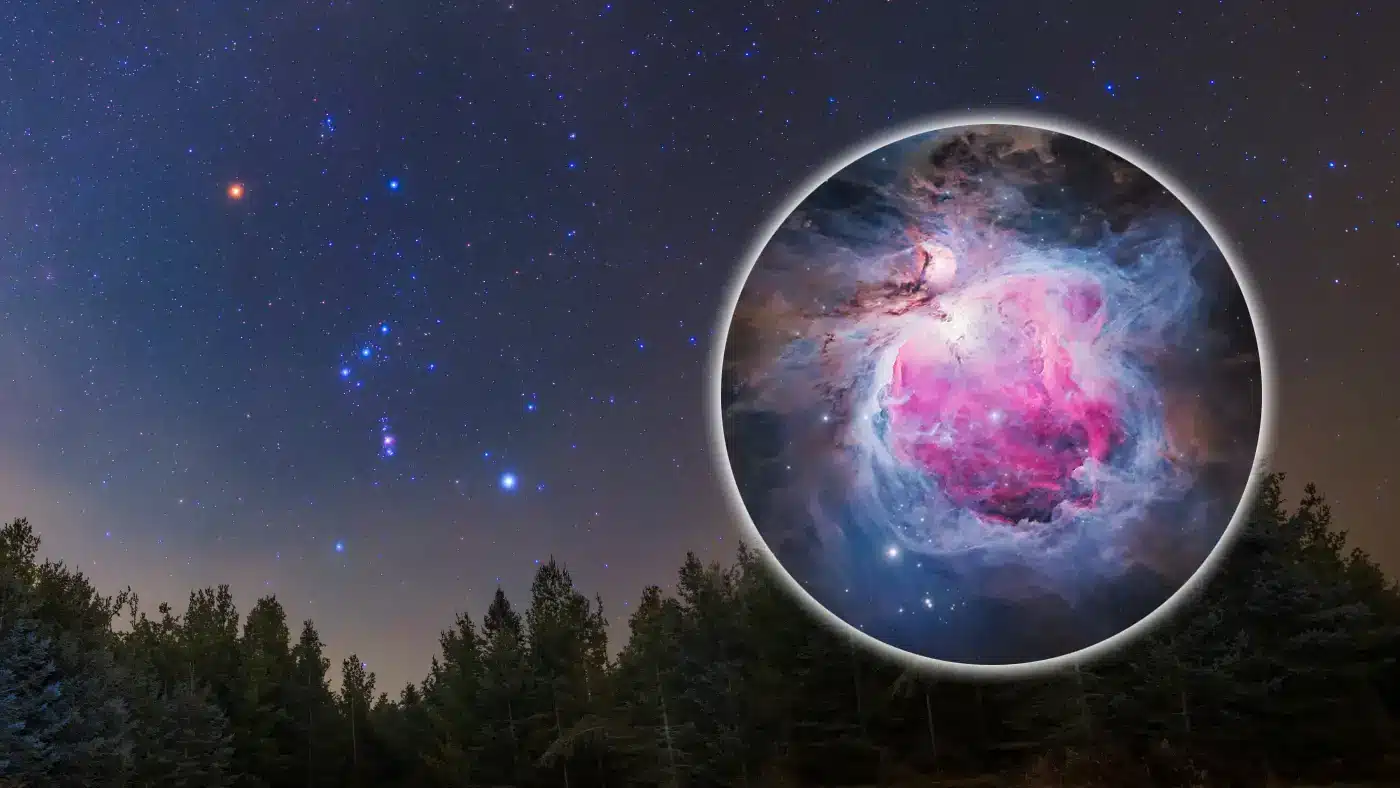
November is a great month to see the Orion Nebula from your backyard, and you do not need a telescope to see it. To see the nebula, look just below Orion’s Belt, the 3 bright stars in a line rising on the eastern horizon around midnight.
The Orion Nebula is located in ‘Orion’s Sword’, a compact asterism made up of three stars and the nebula itself. If you run into the bright blue supergiant star, Rigel, nearby, you’ve gone too far. The ‘sword’ asterism in the Orion constellation is relatively easy to find using the 3 belt stars.
Later this month, the Orion constellation will rise earlier, making it a more practical time to go outside and see it. In the northern hemisphere, Orion is a winter constellation, that will slowly move across the night sky over the next 4 months.
The location of the Orion Nebula in the night sky in mid-November around 10 p.m (mid-northern latitudes). Stellarium Web.
A close-up of the constellation Orion shows the location of the Orion Nebula below the 3 belt stars. Stellarium Web.
The best time to see this nebula is from November to March, so you have a large window of opportunity to see it. This month is the most exciting, however, as ‘Orion the Hunter’ returns to the night sky for the first time since it disappeared in the spring.
The Orion Nebula shines so brightly that it can be seen without the aid of a telescope. Using your naked eye, the Orion Nebula will appear as though it is just another ‘star’ in Orion’s sword, but it is indeed a bright nebula.
An ordinary pair of binoculars will reveal the beautiful glow of this nebula and is truly a sight to behold. If you are lucky enough to own an astronomical telescope, the view becomes even more incredible. Even a small telescope will reveal new layers of depth in the nebula and help you observe the bright core of Orion.
This nebula is renowned as one of the most awe-inspiring celestial sights you can see, and it is returning to the sky this month. For the best possible view, try to escape the city lights, and observe the Orion Nebula when the moon is not out.
Orion Nebula Observing Tips
- The Orion constellation rises at about 9:30 pm by mid-November.
- Orion will rise earlier each day into December and January becoming an evening sight.
- Look for Orion’s Belt in the eastern sky, the Orion Nebula is just below it in Orion’s Sword.
- Try to observe the nebula from a dark sky location away from city lights.
- Use a pair of binoculars to see the nebula up close and reveal the brightest stars.
- Use a Dobsonian Telescope with at least 8 inches of aperture for the ultimate viewing experience.
The bright 3 stars of Orion’s Belt make it easy to find Messier 42, even from the city.
If you need help finding the Orion constellation in the sky, you can use a handy stargazing app on your mobile phone like Stellarium. This allows you to point your phone into the sky, and the app will tell you exactly what you are looking at.
Related Post: How to Photograph the Orion Nebula
About the Orion Nebula
Part of the vast Orion Molecular Complex, the Orion Nebula (Messier 42, or M42) is just one component within this celestial expanse. It encompasses various other celestial objects including the Horsehead Nebula, and Barnard’s Loop, all within the Orion constellation.
This luminous interstellar cloud shines at a magnitude of 4 and contains an emerging open cluster of four primary stars known as the Trapezium. The Orion Nebula stretches across a 1° portion of the night sky, about the size of two full moons.
- Object Type: Reflection Nebula/Emission Nebula
- Constellation: Orion
- Distance: 1,344 light-years
- Apparent magnitude: +4.0
- Apparent dimensions: 65 × 60 arcmins
- Designations: NGC 1976, M42
Unlike many of the dim nebulae regions in the night sky, this one is bright and rewarding when observed through a telescope or binoculars. The bright core of the nebula is easy to spot, even from a heavily light-polluted location in the city.
When it comes to astrophotography, few deep-sky objects can rival the gratification of capturing the Orion Nebula through a telescope. I captured the image below using my camera and telescope from the backyard. The image includes the nearby reflection nebula known as the ‘Running Man Nebula’.
The Orion Nebula and Running Man Nebula. ZWO ASI2600MM Pro Camera.
What Does the Orion Nebula Look Like?
With your Naked Eye
With the naked eye, the Orion Nebula appears as a small fuzzy patch of light within the ‘sword’ of Orion. You will not see any color in the nebula, and it may look as if it is just another faint star.
Through Binoculars
Through binoculars, your view of the Orion Nebula will become much more exciting. The patch of light you saw with your naked eye becomes a noticeable cloud of nebulosity, and the Trapezium cluster of four stars may now be visible.
Depending on the size of your binoculars, you may start to notice a faint blue or green hint of color in the core of the nebula. The field of view created with common binocular sizes (such as 8 x 42) allows you to appreciate the nebula’s overall structure.
A (slightly blurry) example view of the Orion Nebula through binoculars or a small telescope.
Through a Telescope
A telescope can provide a much more detailed view of the Orion Nebula than the one you see through binoculars. The nebula’s core is now intensely bright and concentrated. You may notice different layers and structures of the nebula, which creates a new level of depth to the object.
The four stars in the Trapezium cluster are now obvious, and you may notice wispy extensions of the nebula that extend outward from the central region. A visual telescope with an aperture of at least 8 inches is recommended for the ultimate viewing experience.
Astrophotography
Through long exposure astrophotography, the Orion Nebula comes to life in vivid color. Even a short exposure (10-second) image will reveal a blue/purple color to the object. Detailed images of the nebula include the dim dusty areas around the primary nebula.
The brightest stars in the Orion constellation include Betelgeuse, Alnitak, and Rigel.




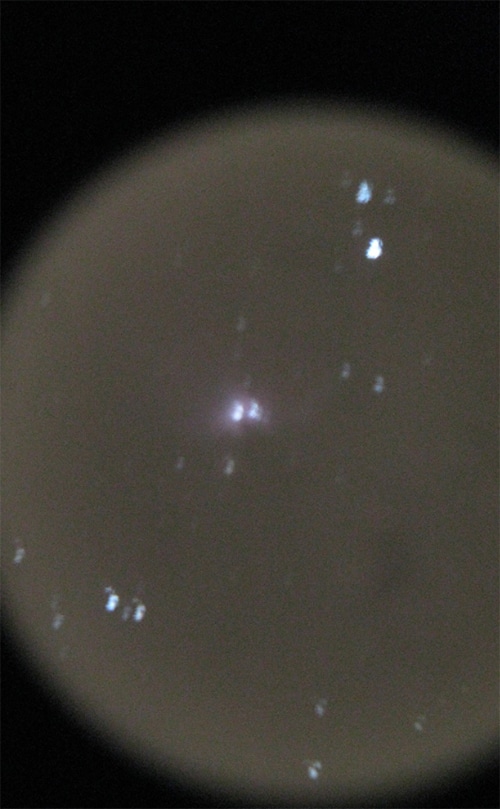
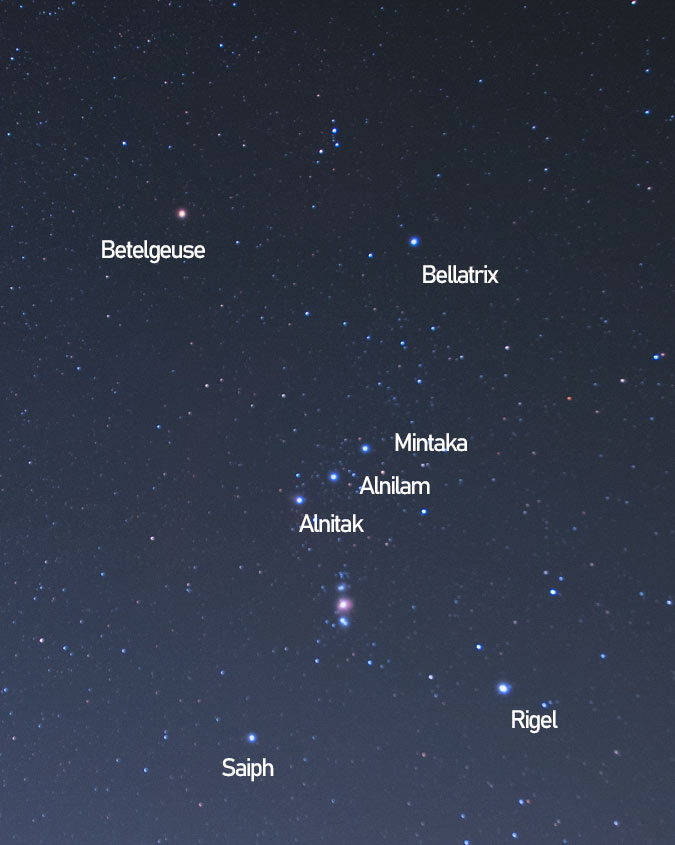
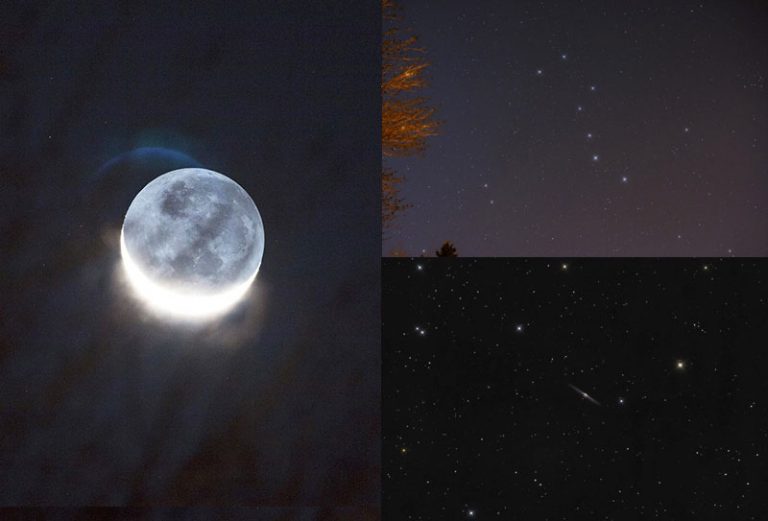


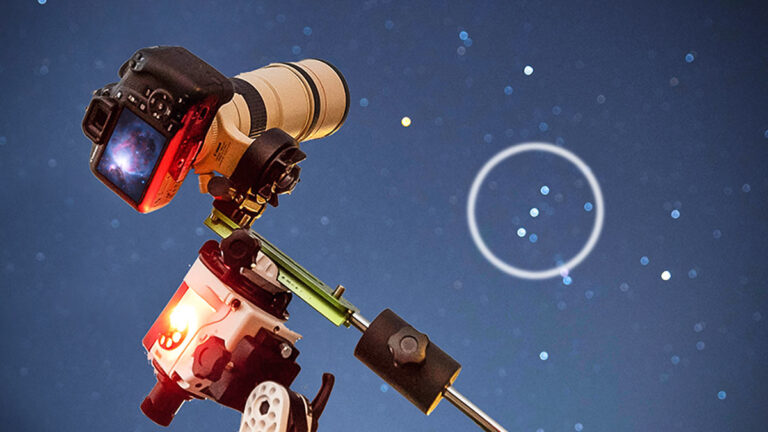
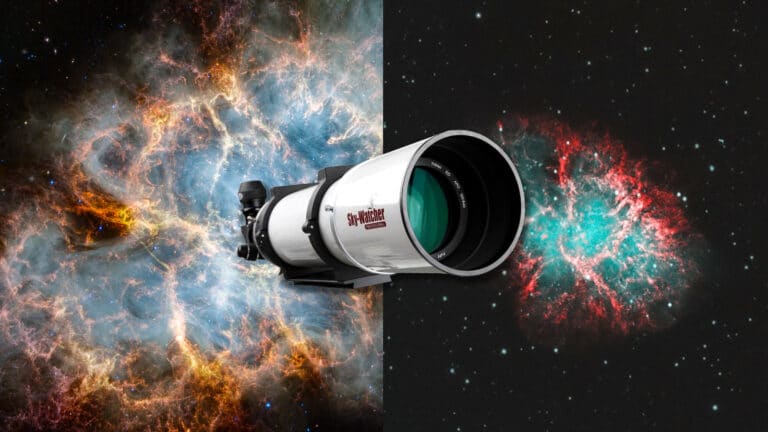
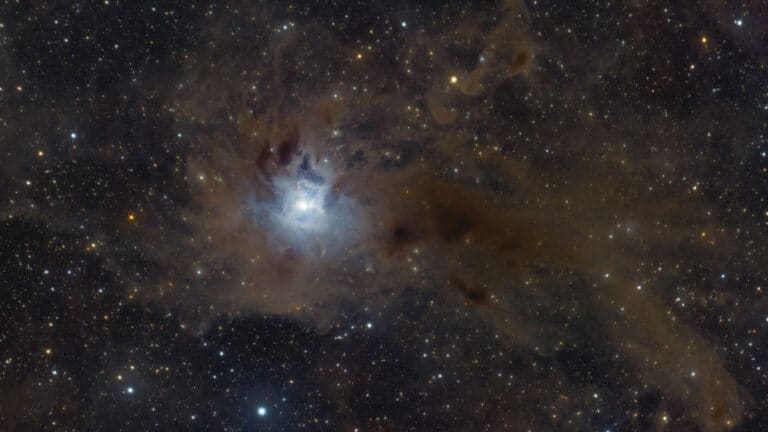
I like the article and I like your blog. I’ve been an amateur astronomer ever since I was a kid! The naked eye and binocular views of the Orion nebula are right on.